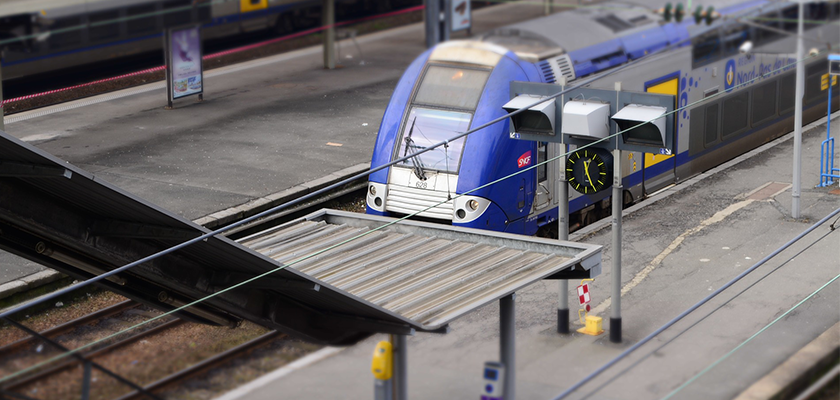French operator SNCF (Société Nationale des Chemins de Fer Français) has installed automatic validation gates in Nice. These doors, which lead to the platforms, replace the fixed security gates. Now the gates only open when commuters present a valid ticket. This can be original, on the phone or printed on paper–.
The change is part of SNCF’s scheme to equip 14 major TGV stations with fare gates by 2018. The objective is double. On the one hand, fight fare evasion. On the other, improve travelers’ safety.
Automatic validation gates’ expected benefits
The total investment for the gates deployment is 10 million euros, plus operating costs of 700,000 euros per year for staff. This is more expensive than the cost of the replaced fixed security gates. Nevertheless, the system should be more cost-effective and viable.
Fare evasion at SNCF is estimated to cost 100 million euros every year, of which 13 million in Nice alone. Two years ago, the city’s fare evasion rate was close to 20%. Currently, specific measures to address this issue have reduced the figure to 16%.
The Administration predicts the automatic validation gates will allow to further decrease fraud. Consequently, economic sustainability will improve, since a point in fare evasion implies a 800.000 euros loss.
In addition, Philippe Tabarot, vice-president of the Regional Council, in charge of transport, affirms the doors will increase safety. Tabarot stresses the co-relation between fraud and vandalism.
The other side of automatic validation gates
Not everyone, however, is convinced about fare gates. The consumer association Fnaut states the solution “is not the most efficient” because it requests a ticket validation, but does not control the legitimacy of the pass cards. Moreover, they regret the fact that people will no longer be able to accompany their families to the trains.
Passenger flow complications
Another issue, which has already generated complications, is passenger flow. During peak hours, stations are very crowded and fare gates can be a problematic since they slow passenger flow and, in turn, can cause agglomerations.
In fact, the automatic validation gates in Saint-Lazare station in Paris must remain open at rush hours to avoid congestion. The doors were installed in December. Nevertheless, they have never been operative in the late afternoon, when thousands of travelers head to the platforms.
Successful fare gates implementation in Llille
Lille’s metro installed fare gates in one of its stations on November. Four months later, the implementation showed positive results: ticket validation rose up to more than 16%, meaning 700 additional validations on average per day.
Métropole Européenne de Lille (MEL) aims to deploy fare gates in the network’s sixty stations by 2020. Like SNCF, the objective is to reduce fare evasion rate to 5% by 2024 and to improve passengers’ comfort and feeling of safety.



